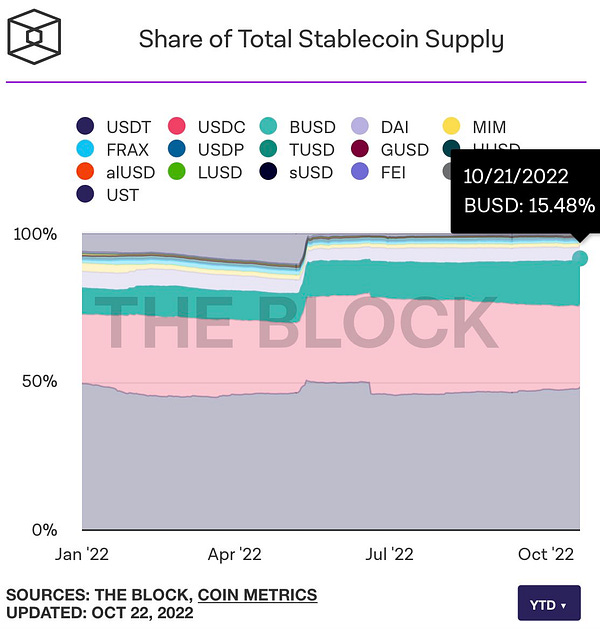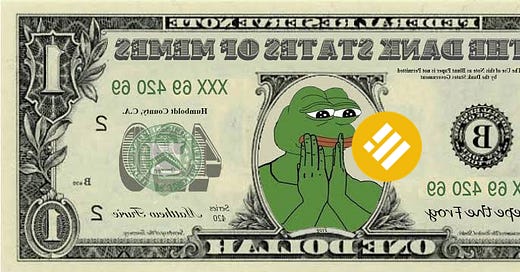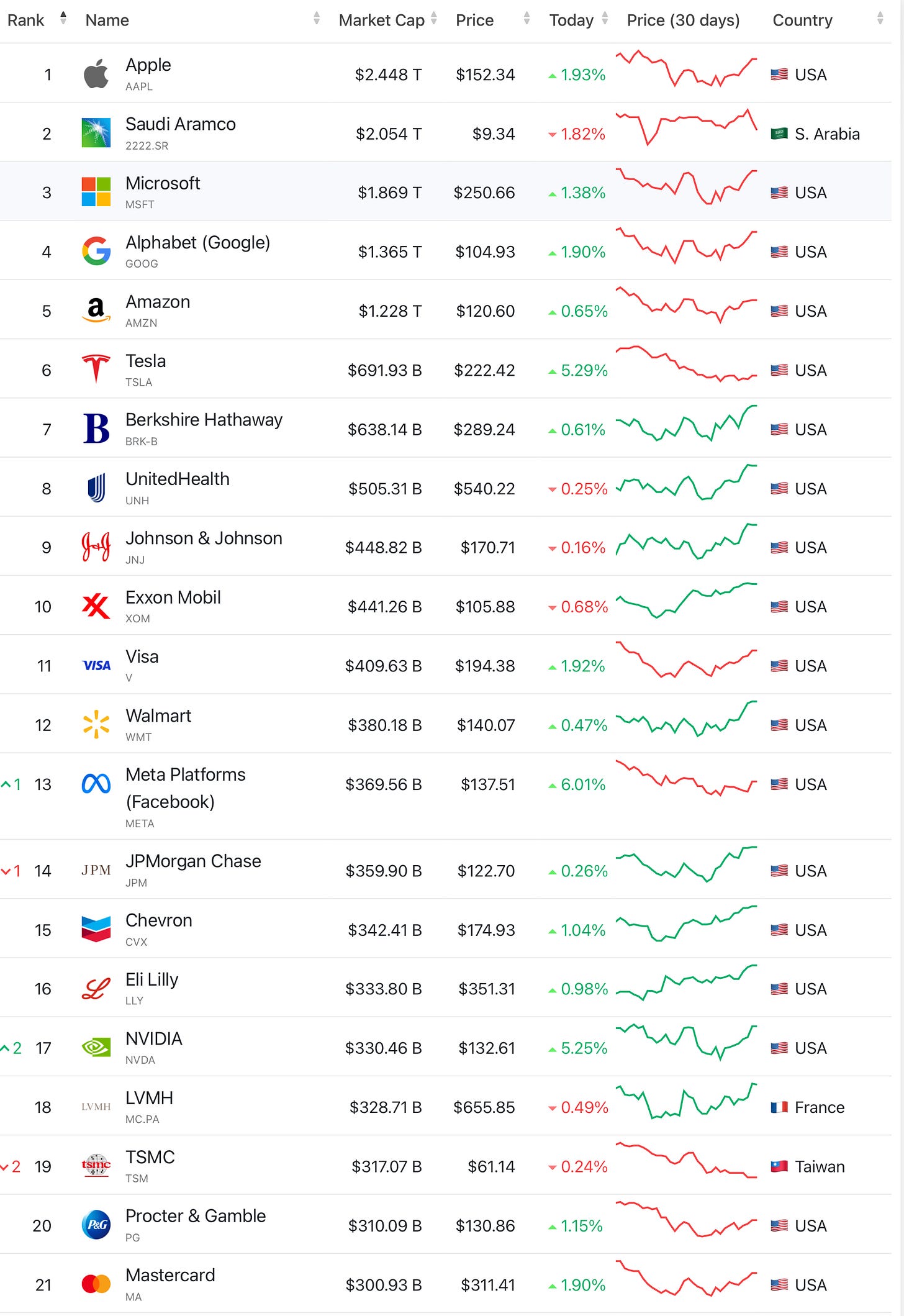Disclaimer, NFA, all that legal stuff: All the information presented on this publication and its affiliates is strictly for educational purposes only. It should not be construed or taken as financial, legal, investment, or any other form of advice.
Hi folks 🙋🏻♂️,
There are 66 days left in 2022. Yikes. Sorry, didn’t mean to scare you there but I can’t believe that it has almost been a year since BTC and ETH almost hit $70,000 and $5,000. You read that right — the crypto market cap hit its peak of $3 trillion in market capitalization in mid-November last year. Time flies. Billions were raised and billions are evaporating as investors and builders experiment and try to find product-market fit. Some ideas were genuinely exciting and others were incredibly stupid when we stop smoking the hopium. Liquidity dries up as the US Fed and Central Banks around the world raised interest rates, putting the entire global economy in a state that we’ve not been in since 2008. Yet, amongst all this mess, there is one crypto sector that’s thriving more than ever: stablecoin.
Binance’s Quest for Stablecoin Dominance
The top three largest stablecoins, USDT USDC BUSD, collectively amass $135 billion in market capitalization. At the current interest rates of approximately 4%, these stablecoin providers are generating $5.4 billion per year. The entities related to these stablecoins are also related to the world’s biggest crypto exchanges: Bitfinex-USDT, Coinbase-USDC, and Binance-BUSD. To grasp the growth of these stablecoins, USDT, the oldest of them all, had a market cap (hence supply) of ~$10 million in January 2017. Within the span of five years, USDT grew 6,800 times, enabling crypto market participants around the world to have quick and easy access to USD, further strengthening the US Dollar’s position as the world’s reserve currency.
USDC found its product-market fit thanks to DeFi. It brilliantly capitalized on the DeFi summer of 2020, becoming the de-facto USD stablecoin for all major DeFi markets. USDC also differentiates itself by using a brand strategy technique called laddering: which is an attempt to deposition competitors by highlighting their weaknesses. To be precise, USDC did this by building a moat around compliance. USDC advertises on the fact that it’s US-based, has brand name partners (BNY Mellon, BlackRock, and is more transparent about its reserves compared to its competitors.
BUSD found success by piggybacking Binance’s established dominance when the stablecoin was launched in 2019. The world’s largest exchange had a lot of ways to promote the usage of BUSD on its own platform, as well as on its own blockchain, the BNB Chain. Fast forward to 2022, BUSD is the third largest stablecoin and Binance is more eager than ever to grow its stablecoin dominance.
When we talk about crypto use cases, the promise of decentralization, web 3.0 potentials, and a more equitable internet is often what comes out of VCs’ talking points. Although all the above are exciting, they’re all currently in a development phase, and it would take years before any tangible crypto products that don’t have anything to do with facilitating speculation or trading, will achieve mainstream success. That said, there is one very obvious use case of crypto that has been widely adopted in the past couple of years. A graphic designer in Brazil can now easily accept payment in USDC from her client in Finland without having to rely on centralized systems, pay an exorbitant amount of fees, and worry whether she’ll be able to access her money. Simply put, the growth of USD stablecoins propelled the global flow of capital, enabling a thriving digital-first economy.
In this piece, we discuss Binance’s recent strategic move regarding BUSD conversion and elaborate on why despite all of the recent regulatory issues, innovating on stablecoin designs will continue to be an important area for DeFi in the next few years.
Here are the quick takeaways:
Stablecoin has the best PMF compared to any other crypto product.
The three largest stablecoins, USDC USDT BUSD, collectively amount to $135 billion in market capitalization, generating $5B+ in annual interest.
Even though Binance is the largest crypto company, being the dominant stablecoin player is a strategic win that it needs.
Having control over a stablecoin can unlock enormous value for one’s protocol.
Stablecoin providers’ affinity toward decentralization will be tested in a high-interest rates environment.
Magnum Opus
Binance is the Magnum Opus of crypto. It is the largest exchange in the world. The company that was started in 2017 recently celebrated its 5-year anniversary back in July. I don’t think anybody who has been in crypto can deny that Binance is one of the greatest companies built in the past five years. While tech bros in Silicon Valley were chasing Uber, BNPL, and the next 15-minute quick commerce to bolster their returns, the most profitable companies built in the past few years were instead building under their noses the whole time. Perhaps, it was too successful to accept any substantial outside capital, was geographically too risky for institutional US investors, and deemed.
To truly comprehend how large Binance is, let’s do some back-of-the-napkin math. CZ, the CEO of Binance, reported that the exchange did $34 trillion in crypto trading volume in 2021. Actually, I’m not going to reinvent the wheel and let Zaheer, a Portfolio Manager at Ledgerprime, do the rest.
At a conservative estimate of $300 billion valuation, Binance will become the #21 largest company in the world. All this is happening while crypto hasn’t unlocked its full potential. The total crypto asset market cap is stagnating at around $1 trillion. It would be prudent to think that this value won’t go back up to $3 trillion, or even reach $5 trillion in the future. Binance is also aggressively growing its product suites across different emerging markets, as well as being more active with its on-chain initiatives.
The bottom line: Binance as a $1 trillion company is extremely probable.
Despite all of the success and amazing accomplishments stated above, Binance is in a tricky position.
Take a look at the list above. Only three out of the 21 largest companies in the world with $300B+ market capitalization are not US-based. Saudi Aramco is government-backed, LVMH is Arnault’s brainchild that only targets the top 1%, and TSMC is one of the most important companies in the world.
What’s in common: all three companies are US-friendly adjacent
Saudi Arabia/Aramco is an important ally
LVMH/France is not controversial and is an ally
TSMC is an ally(?) — anyway, it listens to the US
We can clearly see how much attention the world is putting on TSMC right now as it’s the most important company that might fall under the crossfire between the US and China.
Not only crypto as an industry is still under a lot of scrutiny from governments around the world, but Binance itself also is not a “western” company. Mainstream financial publications around the world had published investigative pieces on Binance, some justifiable, others looked like hit pieces. Although CZ himself is a naturalized Canadian citizen (he was born in China), Binance had been marked as a Chinese company by uninformed journalists due to his ethnic background. This, combined with the fact that crypto is a nascent space that touches finance (the most regulated industry in the world), puts Binance in a tough spot with unique risks to consider.
Enter BUSD
Not only does it makes perfect business sense for Binance to continue expanding its stablecoin initiatives, but I would argue that it’s also a necessary strategic tool that can help them mitigate potential risks. The USD is the world’s reserve currency. Many stablecoin providers around the world have tried to create their own form of non-USD stablecoins, to limited success. The number one talking point that stablecoin lobbyists use when explaining the benefits of stablecoin to US lawmakers is that USD-denominated stablecoin will help the USD’s role as the world’s reserve currency. That argument is extremely valid and we’re already seeing its impact in the past few years.
As a global company that’s been constantly under scrutiny from governments around the world, Binance has been making strategic moves by placing headquarters and partnerships with developing nations around the world.

Where am I going with this: having control over your own USD stablecoin will provide Binance with more power in its regulatory discussion with governments around the world.
OFAC risks: I don’t think Binance will completely ban BUSD like how USDC banned addresses associated with Tornado Cash. Sure Paxos (BUSD partner) is US-based, but Binance isn’t.
Eurodollar → cryptodollar: this theory isn’t new — eurodollar refers to USD-denominated deposits held outside of the US, they’re not subject to regulation by the Federal Reserve Board. Cryptodollar is an extension of the eurodollar, fulfilling the insatiable demands for USD outside of the US.
TL;DR: Binance is a global company that has been under a lot of scrutiny by governments around the world, primarily western adjacent governments. In its regulatory play by establishing partnerships around the world with developing nations — combined with the uncertainties on whether or not some aggressive move will be made by US regulators against it, Binance will benefit significantly by being the numero uno provider of cryptodollar.
Binance started converting users’ USDC USDP and TUSD balances to BUSD automatically on September 29 and the strategy has worked quite well so far.
USDT isn’t included. There might be some strategic benefit, but that’s for another post ;)





Silver Lining
Matt Levine wrote a banger crypto piece. It’s 40,000 words. It might have saved the crypto market (BTC rose after his post).
My favorite sentence: "If the world is increasingly software and advertising and online social networking and, good Lord, the metaverse, then the crypto financial system doesn’t have to build all the way back down to the real world to be valuable. The world can come to crypto."
For the world to come to crypto, we to focus on building great products. When your product is primarily driven by speculative incentives baked into token rewards and ponzinomics designs, users won’t stay. Ironically, even DeFi products whose main source of attraction is yield are currently facing competition from US T-Bill yield. Bottomline: crypto need to focus more on building great products.
Until next time,
Marco M.











Great piece! Thank you 🙏